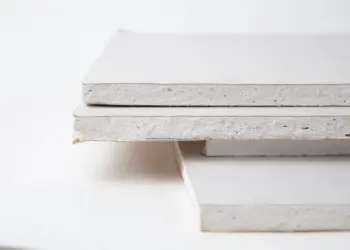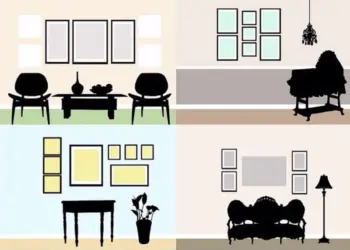Cracks in walls can be a frustrating and unsightly issue, whether they’re in your home or office. Understanding how to effectively get rid of cracks is crucial to maintaining the structural integrity and aesthetic appeal of your living or working space. Here, we’ll delve into the comprehensive guide on tackling cracks, offering essential tips and insights to help you address this common problem with confidence and efficiency.
Table of Contents
Cracks
Dealing with cracks in walls is a common challenge that many property owners face. These cracks can appear due to various factors, including structural settling, temperature fluctuations, or even poor construction practices. While they may seem minor at first, ignoring them can lead to more significant issues, including compromised structural integrity and costly repairs down the line.
Understanding the Causes of Cracks
Before addressing the cracks, it’s crucial to understand their root causes. Cracks can occur due to foundation issues, natural settling, moisture fluctuations, or even the use of low-quality building materials. Identifying the specific cause will help you develop a more effective and lasting solution.

Understanding Types Of Cracks In Your Home
There are various types of cracks that can appear in a home, including:
- Settlement Cracks: These occur due to the natural settling of a house over time.
- Shrinkage Cracks: Common in concrete, these cracks develop during the drying process.
- Structural Cracks: Caused by structural issues like foundation problems or excessive loads on walls.
- Thermal Cracks: Form as a result of temperature fluctuations leading to expansion and contraction in materials.
- Hairline Cracks: Fine cracks that are typically superficial and do not affect the structure.
Understanding the types of cracks is essential in diagnosing and addressing potential issues within a home.

Preparing the Surface
The first step in resolving cracks is preparing the surface. This involves cleaning the area thoroughly, removing any loose debris, and ensuring a stable base for the repair material. Proper surface preparation is vital for the success of the repair process and ensures a more seamless finish.

Filling the Cracks
Once the surface is adequately prepped, filling the cracks is the next crucial step. Use high-quality filler or sealant that matches the material of the wall. Apply the filler evenly, making sure to fill the entire crack and any surrounding gaps to prevent further damage.
Smoothing and Sanding
After the filling process, smooth the surface using a putty knife or sandpaper. This step is essential for achieving a seamless and uniform finish. Sanding the filled areas creates a level surface, ensuring that the repaired area blends in seamlessly with the rest of the wall.
Painting and Finishing
To fully restore the aesthetic appeal of the wall, consider painting the repaired area. Match the paint color and texture to the rest of the wall for a cohesive look. A final coat of paint will not only conceal the repairs but also provide added protection against future damage.
Prevention Tips
Implementing preventive measures is crucial to avoid future occurrences of cracks. Ensure proper drainage around the property, control humidity levels, and address any structural issues promptly to prevent cracks from reappearing.
Importance of Professional Help
While some cracks can be resolved as DIY projects, complex or extensive damage may require professional assistance. Consulting a professional can provide a more thorough assessment and ensure long-term solutions, especially for significant structural issues.
Cost Considerations
Understanding the costs associated with crack repairs is essential for effective budgeting. Assess the materials, tools, and labor costs involved in the repair process, as well as any additional expenses that may arise during the project.

Materials and Tools Required
Having the right materials and tools is crucial for a successful repair job. Ensure you have the necessary fillers, sealants, putty knives, sandpaper, and paint matching tools on hand before starting the repair process.
Safety Precautions
Prioritize safety throughout the repair process. Use protective gear such as gloves, goggles, and masks when handling repair materials, especially those with strong chemical components. Additionally, take necessary precautions when working at heights or in confined spaces.
DIY vs. Professional Services
Consider the scope of the repair job and your expertise before deciding between a DIY approach and hiring professional services. While minor cracks can often be managed independently, complex or extensive damage may require the skills and experience of professionals.

Common Mistakes to Avoid
Avoid common mistakes such as using the wrong filler, neglecting proper surface preparation, or rushing through the repair process. Understanding these common pitfalls can help you achieve a more successful and long-lasting repair.
Maintenance Tips for Longevity
Implementing regular maintenance practices is key to prolonging the lifespan of your walls and preventing future cracks. Conduct routine inspections, address any issues promptly, and prioritize structural integrity to preserve the quality and durability of your property.
Weather Considerations
Weather conditions can significantly impact the occurrence and severity of cracks. Be mindful of seasonal changes, temperature fluctuations, and weather patterns that may affect the stability of your property’s structure, and take necessary precautions accordingly.
Final Words of Advice
Successfully getting rid of cracks requires a combination of proper preparation, effective repair techniques, and consistent maintenance practices. By following these tips and guidelines, you can ensure that your property remains structurally sound and aesthetically appealing, safeguarding its value and longevity for years to come.

FAQs
How can I differentiate between minor and major cracks in my walls?
Differentiating between minor and major cracks involves assessing their size, shape, and direction. Minor cracks are typically small and superficial, often caused by natural settling or temperature fluctuations. Major cracks, on the other hand, are larger, deeper, and may indicate underlying structural issues that require immediate attention.
What are the primary warning signs of structural damage caused by cracks?
Look out for signs such as significant wall displacement, visible gaps between walls and ceilings, uneven floors, or doors and windows that no longer close properly. These can indicate more severe structural damage, necessitating professional intervention to prevent further deterioration.
Is it necessary to consult a professional for every crack that appears in my walls?
While minor cracks may be manageable as DIY projects, it’s essential to seek professional assistance for any cracks that raise concerns about the structural integrity of your property. Consulting a professional can provide a thorough assessment and ensure appropriate measures are taken to address potential issues effectively
How often should I conduct inspections to identify potential cracks in my property?
Conducting regular inspections every six months is advisable to identify any new cracks or changes in existing ones. Additionally, be vigilant after extreme weather events, as sudden shifts in temperature or moisture levels can accelerate the formation of cracks.
What are the long-term implications of ignoring cracks in my property’s walls?
Ignoring cracks can lead to further structural damage and compromise the stability of your property. Over time, these cracks can worsen, resulting in costly repairs, decreased property value, and potential safety hazards. Addressing cracks promptly is crucial to maintain the integrity and longevity of your property.
What is good for cracks?
A good approach is to keep the affected area clean and dry while protecting it from further irritation or damage.
What wall cracks are normal?
Hairline cracks are often considered normal and are usually not a cause for concern.
How can you tell if a crack is structural?
Cracks wider than 1/4 inch or accompanied by other structural issues may indicate a more serious problem.
How do you treat cracked walls?
Treatments may vary depending on the cause of the cracks, but they can include patching, sealing, or reinforcing the walls.
What causes cracking in walls?
What causes cracking in walls? Cracks can result from various factors such as foundation settlement, temperature fluctuations, moisture, or structural issues.










